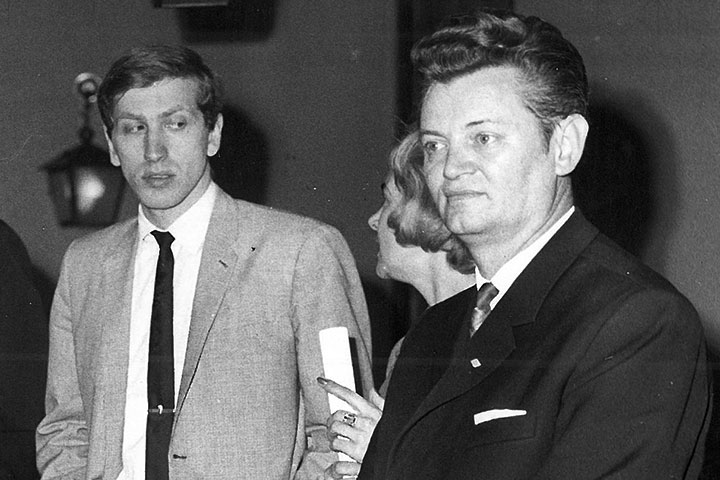


One week from today, the Tournament of Peace returns for a 2018 edition featuring Vassily Ivanchuk, Ivan Saric, Etienne Bacrot and Bassem Amin, Vladimir Malakhov, Ivan Cheparinov, Baskaran Adhiban alongside top Croatian players. Last held in 1985, the tournament is being revived 53 years after its first edition in 1965.
The reigning World Champion, Tigran Petrosian, was among those participating in the very first Tournament of Peace. He placed third with 12½ points. Interestingly, Lajos Portisch won all his games against the first three players (replay his win over Ulhmmann below), but too many draws against the lower-rated players in the field cost him the tournament title. Further down in the final ranking were great players like Parma, Bronstein, Larsen, etc. There was a sculpture, dubbed the "Horseman of the Peace", that was intended for the winner, but since Ivkov and Uhlmann shared first place nobody got the sculpture. The local players from Zagreb were: Marovic, Minic, Damjanovic, Udovcic and Bertok.
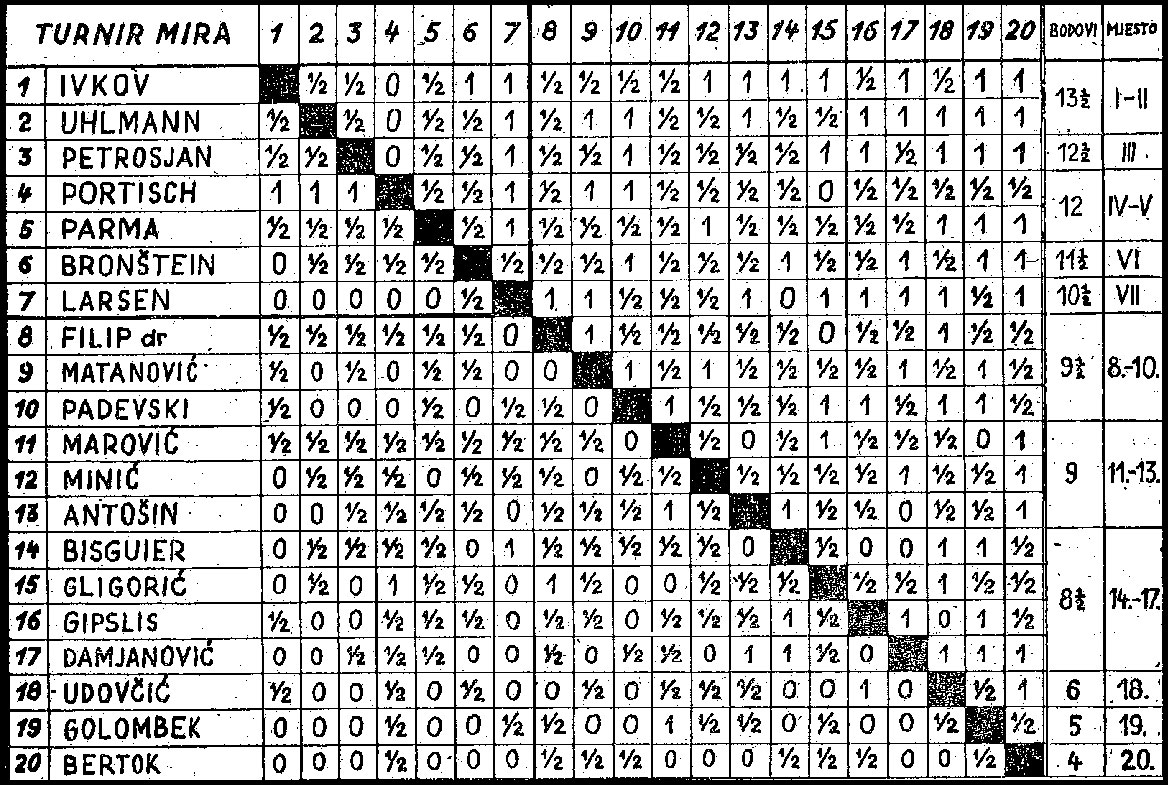
1965 tournament crosstable (click or tap to expand)
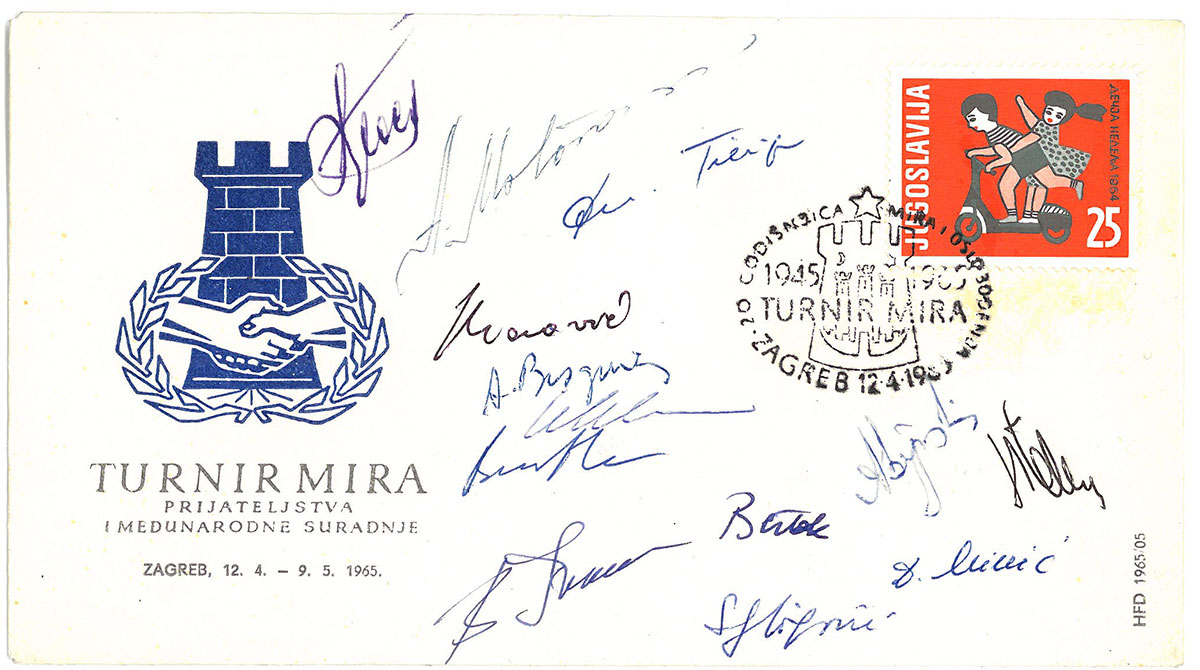
Postcard signed with players of the tournament 1965 | Courtesy Ervin Sindik
The next Tournament of Peace was played five years later in 1970, held both in Rovinj and Zagreb. While the field of players was smaller, it was even stronger than the first one and brought the already-legendary Robert James Fischer to town!
Fischer arrived in Rovinj directly from Herceg Novi, where he had won an equally impressive blitz tournament, inspected the playing hall, and that same evening could be found showing Walter Browne some games from Herceg Novi:
| 1 | Bobby Fischer (USA) | 2720 | 19 |
| 2 | Mikhail Tal (URS) | 2590 | 14½ |
| 3 | Viktor Korchnoi (URS) | 2670 | 14 |
| 4 | Tigran Petrosian (URS) | 2650 | 13½ |
| 5 | David Bronstein (URS) | 2570 | 13 |
| 6 | Vlastimil Hort (CSR) | 2610 | 12 |
| 7 | Milan Matulovic (YUG) | 2560 | 10½ |
| 8 | Vasily Smyslov (URS) | 2620 | 9½ |
| 9 | Samuel Reshevsky (USA) | 2590 | 8½ |
| 10 | Wolfgang Uhlmann (GDR) | 2570 | 8 |
| 11 | Borislav Ivkov (YUG) | 2570 | 7½ |
| 12 | Predrag Ostojic (YUG) | NR | 2 |
Source: Wikipedia
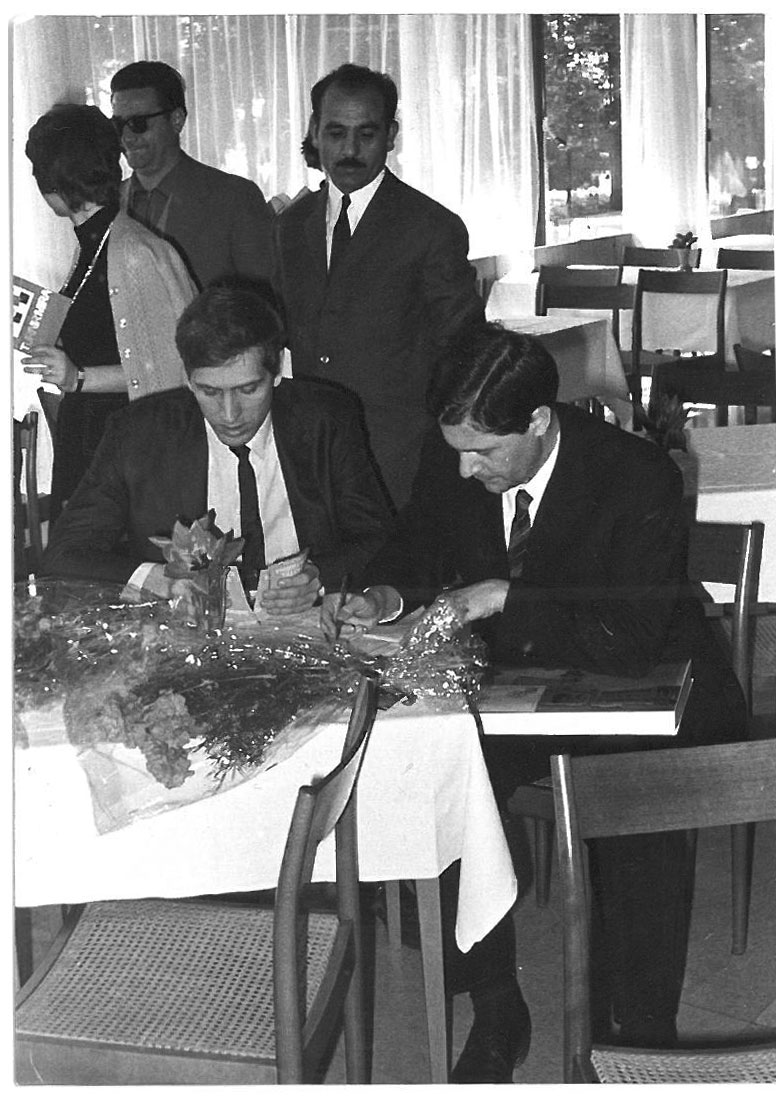
Fischer with Marovic at the drawing of lots | Photo: Erwin Sindik
The next day, as the final preparations were being made for the tournament, he demanded a further $1,000 fee for his participation. The organizers refused. The round got underway and a decision was made to replace Fischer with IM Srdjan Marangunic. But in the nick of time his first round opponent, Bruno Parma, stepped in and told Fischer, "Bobby, you know that Russians are happy that you will not play?"
Fischer replied, "True. Ok, let's play!" And the game was on. Fischer won.
[You can replay this and a selection of Fischer's other games from the tournament in the game viewer below!]
Click or tap a game in the list to switch games
You can see the original signed scoresheet from Fischer's draw with Smyslov.
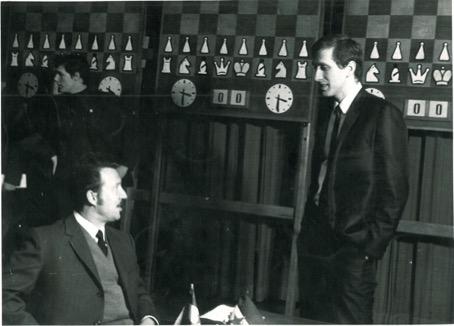
Fischer and Gligoric chatting before the last round | Photo: Ervin Sindik
Bobby won the tournament by a full two points ahead of the world chess elite and declared his run for the World Championship crown.
For first place, Fischer received a sculpture dubbed the Horseman of Peace, which he deposited at the US Embassy (maybe it is still there today). Players from Zagreb who competed in the tournament were: Minic, Bertok, Kovacevic (who defeated Fischer, dealing the American his first loss after three years!), Marovic and Udovcic.
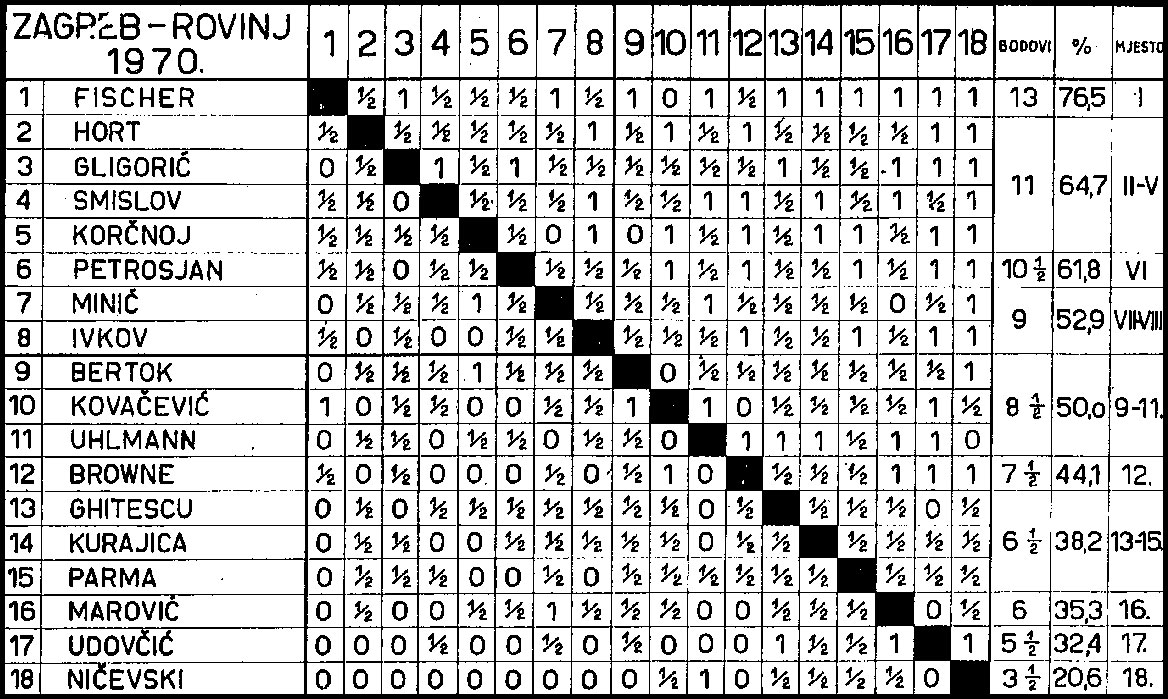
1970 tournament crosstable
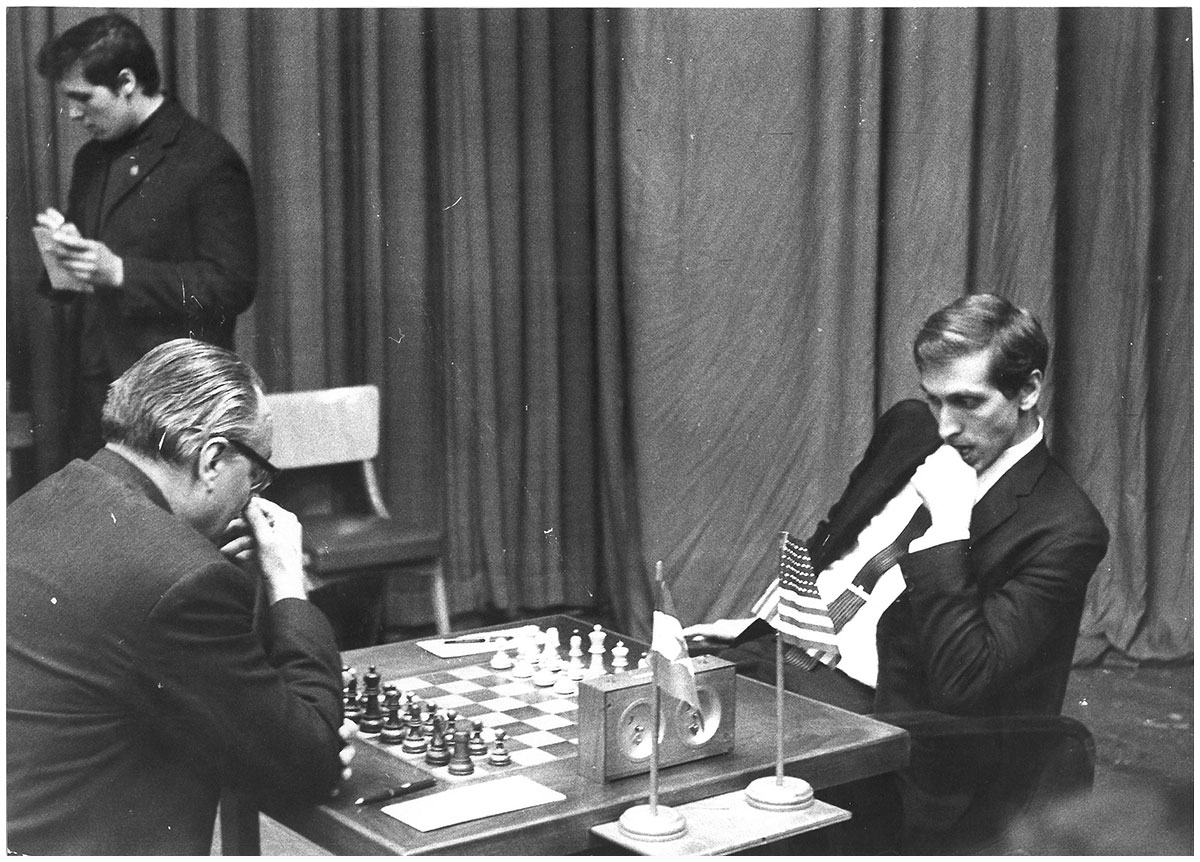
Fischer vs Udovcic (click or tap to enlarge) | Photo: Ervin Sindik
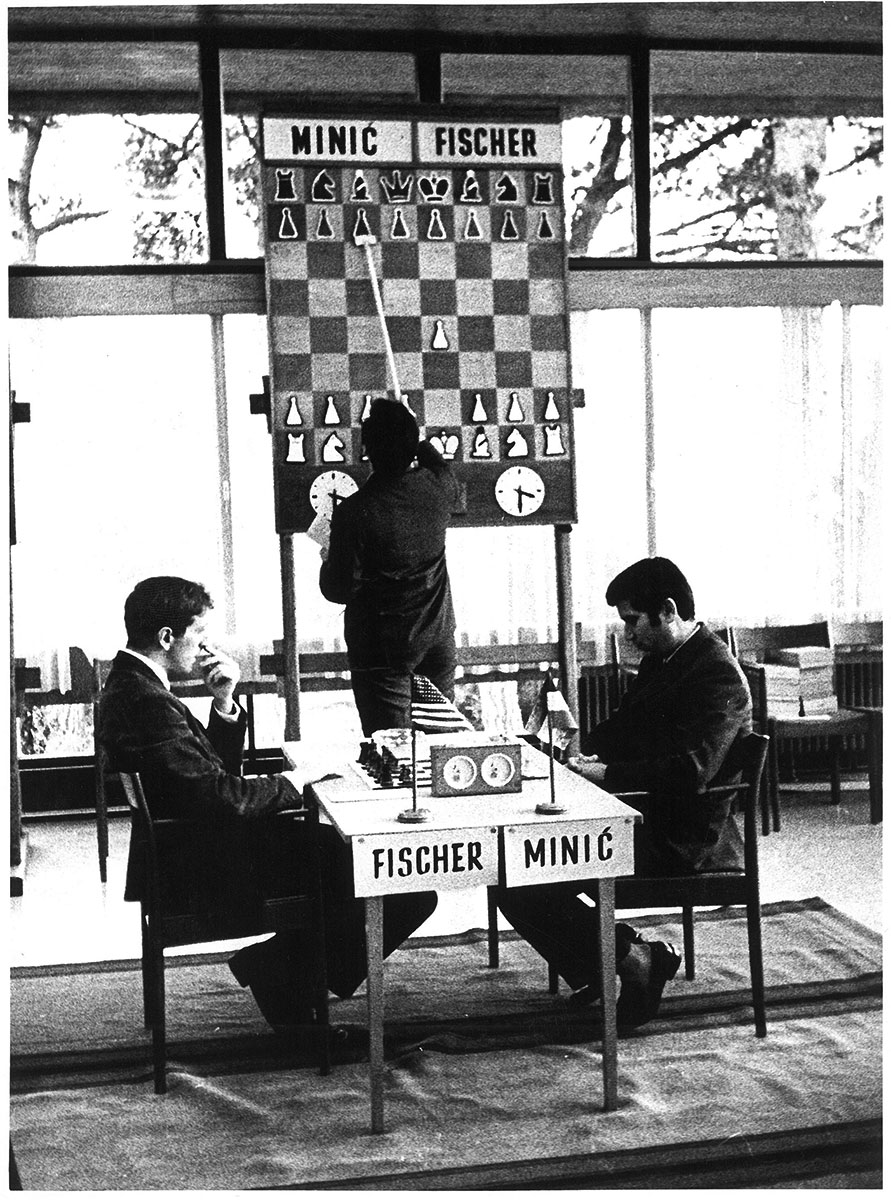
Minic vs Fischer in Rovinj (click or tap to enlarge) | Photo: Ervin Sindik
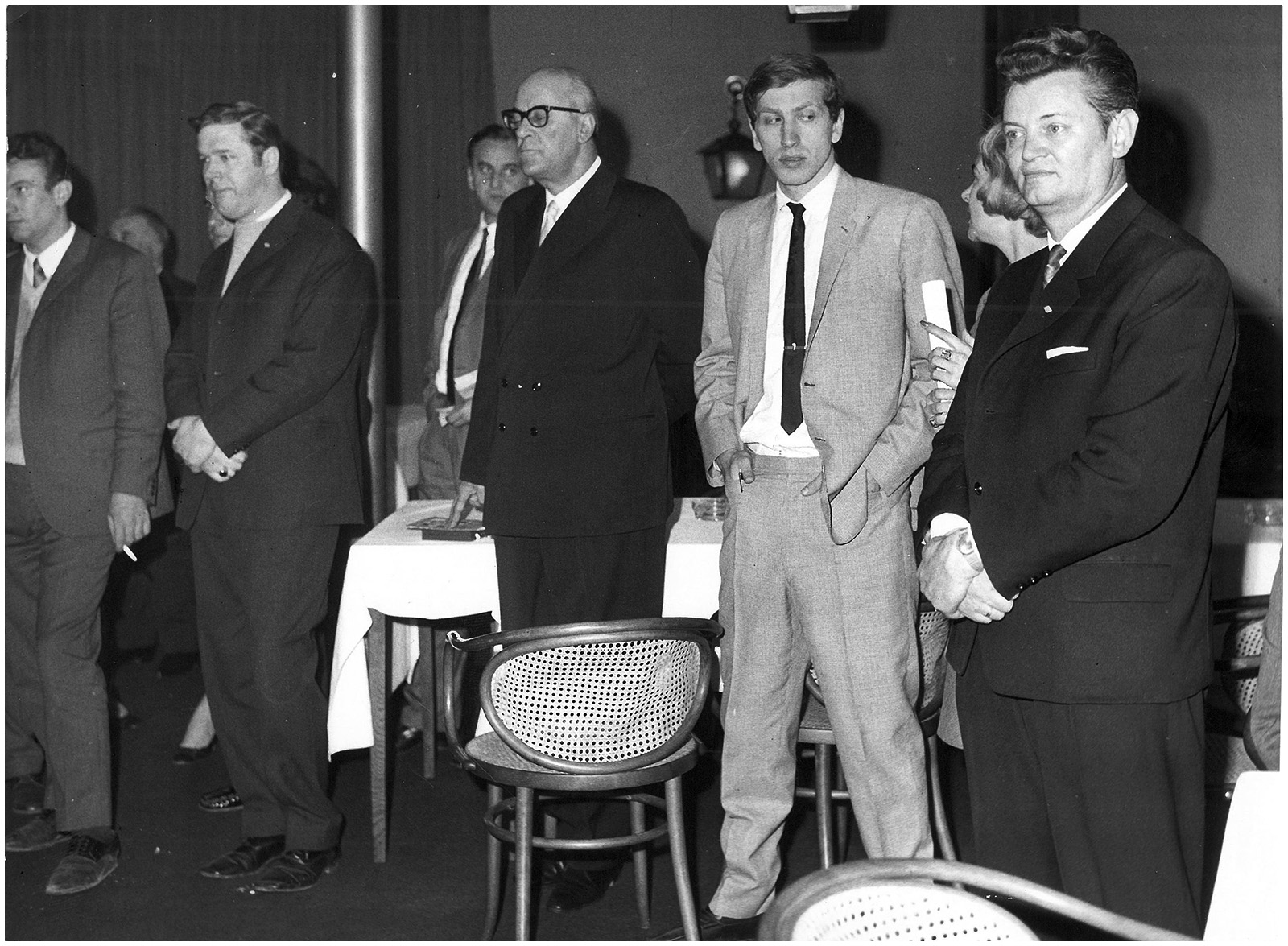
At the closing ceremony | Photo: Erwin Sindik
Again after a gap of five years, in 1975, the third Tournament of Peace was once more played in both Rovinj and Zagreb. Since it was quite exhausting to play so many rounds, the organizers reduced the number of players, making it a 14-player single round-robin. This time players from Zagreb, GMs Kovacevic and Nikolac, were close to winning the tournament, but in the end, it was Gyula Sax who took clear first place by the narrowest of margins.
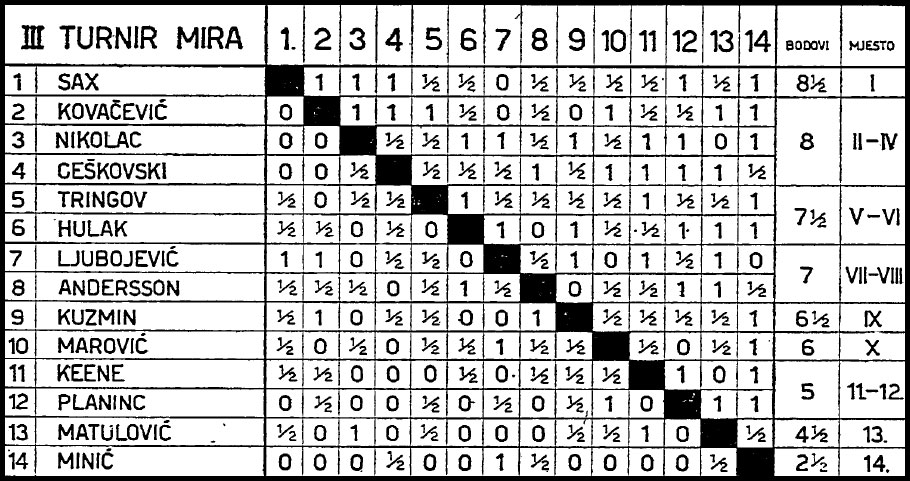
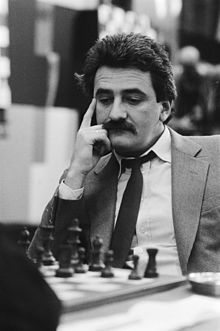 The last Tournament of Peace was played in 1985, and was notable for the success of the legendary blitz player from Zagreb, Krunoslav Hulak, who took second place behind the great Jan Timman (one of the strongest players in the world at that time) with a result of 8½/13.
The last Tournament of Peace was played in 1985, and was notable for the success of the legendary blitz player from Zagreb, Krunoslav Hulak, who took second place behind the great Jan Timman (one of the strongest players in the world at that time) with a result of 8½/13.
In their head to head encounter (below), Hulak went wrong in the late middlegame, but missed several opportunities to level the game after Timman unnecessarily sacrificed the exchange.
"Kruno" died in 2015, and every year the Zagreb Open tournament (this year scheduled for December 1-8) is played in his honour.
The photo of Hulak (in 1983) is one of several from the private photo album of former Croatian Chess Federation Secretary General, Ervin Sindik, who generously shared these historical images which were previously unavailable online.
Born again, the Tournament of Peace will be held in Zagreb in the Hotel Palace (the same place where Fischer was staying in 1970) from November 12th till 23rd, 2018.
The tournament reaches Category 16 and will consist of six strong GMs from the city of Zagreb and six GMs from all over the world:
| Date | Event | Time |
|---|---|---|
| Nov. 11 | Players arrival | |
| Nov. 12 | Opening ceremony | 14:00 |
| 1st round | 15:00 | |
| Nov. 13 | 2nd round | 15:00 |
| Nov. 14 | 3rd round | 15:00 |
| Nov. 15 | 4th round | 15:00 |
| Nov. 16 | 5th round | 15:00 |
| Nov. 17 | 6th round | 15:00 |
| Nov. 18 | Free day with simultaneous display | |
| Nov. 19 | 7th round | 15:00 |
| Nov. 20 | 8th round | 15:00 |
| Nov. 21 | 9th round | 15:00 |
| Nov. 22 | 10th round | 15:00 |
| Nov. 23 | 11th round | 11:00 |
| Closing ceremony after the last round |
Mid-way through the tournament, on the free day (November 18th), there will be a simulatanous display with top GMs against players from local chess clubs, school kids and local public figures from the city of Zagreb.
Thanks to the Sports Association of Zagreb and all the Representatives of the City of Zagreb headed by mayor Mr. Milan Bandic, who made this tournament possible again. Also, a special thanks goes to the European Chess Union who supported the tournament as well.